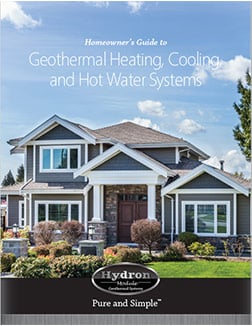Here’s a recipe for discomfort: One multi-level historic home plus tall windows and ceilings, plus a sunroom, plus seldom-used guestrooms.
Though loaded with character, this Victorian beauty delivers inconsistent comfort for its occupants. In winter, first-floor rooms stay warm while second-floor spaces border on chilly. In summer, the downstairs stays comfortably cool while the bedrooms upstairs lean toward stifling.
The challenge? A single thermostat on the main floor regulates the temperature of the whole house. The homeowners are puzzled over their HVAC configuration—not to mention how they will heat and cool the unfinished third floor when they turn it into their dream master suite.
Puzzle no more: An HVAC zoning system may solve these problems.
%20(1).jpg?width=900&height=600&name=Untitled%20design%20(4)%20(1).jpg)
HVAC ZONING: EFFICIENT COMFORT, LOWER UTILITY BILLS
Zoning divides a building’s space into separate areas, each with its own temperature control. The more precise regulation of temperature here and there means greater comfort throughout.
Homeowners have used zoning to address multiple comfort challenges, like
- Multi-story homes where some rooms are closer to the furnace than others. (The farther air travels through ductwork, the more its temperature changes.)
- Homes with large windows or skylights. These glass surfaces affect heat gain and loss.
- Homes with sunrooms. In addition to glass, a sunroom’s limited insulation and flooring with different thermal properties affect temperature.
- Vaulted ceilings that contribute to uneven temperature distribution.
- Basements or attics converted into living spaces. The temperature requirements of rooms like these often differ from those of other spaces.
- Homes with guestrooms that remain unoccupied for extended periods. These lead to wasted energy if the HVAC system treats them as frequently used spaces.
- A home office, often distant from the furnace. Home offices may also house electronic equipment that generates heat.
- Homes with aging HVAC systems that run inefficiently and consume excess energy.
Zoning systems can be retrofitted to accommodate existing and even historic homes. It all depends on the home’s current HVAC system and the homeowner’s willingness to upgrade. And according to the U.S. Department of Energy, upgrading may be worth it. A well-planned zoning system can reduce a family’s energy consumption by up to 30%.
COMMON SENSE COMFORT BASED ON HOW YOU USE SPACE
Zoning reduces the constant cycling of your HVAC system and related wear and tear. Setting up a zoning system begins with identifying how you use the spaces in your home, the orientation of those spaces, and the heating and cooling requirements of each.
A typical zoning system includes
- Zone dampers - These valves installed in the ductwork open or close to control the flow of air into specific zones.
- Thermostat network - Each zone has its own thermostat that communicates with a central control panel.
- Control panel - The brain of your zoning system. The panel receives signals from individual thermostats and adjusts the position of zone dampers.
- Bypass dampers - These relieve excess air pressure in the HVAC system when only a few zones are active. They help prevent damage to the system and ensure proper airflow.
- Ductwork modifications - In some cases, additional ductwork creates separate zones. This can involve installing new ducts or modifying existing ones to direct air to specific areas.
RETROFITTING A ZONE SYSTEM TO YOUR EXISTING HOME
An HVAC contractor who specializes in retrofitting zoning systems can assess your home’s suitability for zoning. This includes a look at
- The size, configuration, and condition of your home’s current ductwork.
- The condition of its insulation and ventilation.
- The age and efficiency of your current HVAC system.
- Available space for additional components a zoning system may require.
- Compatibility of existing wiring and control infrastructure.
- Your current system’s airflow capacity.
- Local building codes and regulations.
The assessment will help you determine the feasibility and cost-effectiveness of a retrofit.
HVAC ZONING IN A NEW BUILD: REALIZING NET-ZERO ENERGY CONSUMPTION
A combination of solar panels, HVAC zoning, and a geothermal heating and cooling system supplied by Enertech helped homeowners Mark and Kathryn achieve net zero energy electricity consumption for their new home. This Twin Cities area residence elegantly balances sustainability and energy savings, thanks in part to forced air zoning on the main level and basement and seven radiant floor zones.
- Actual energy drawn from the grid during performance period: 9,998 kWh
- Actual energy added to the grid during performance period: 18,467 kWh
- Net energy use: –8,469 kWh
Are you curious about energy efficiency and lowering your utility bills? Contact the energy experts at Enertech. We’d love to hear about your heating and cooling challenges.


